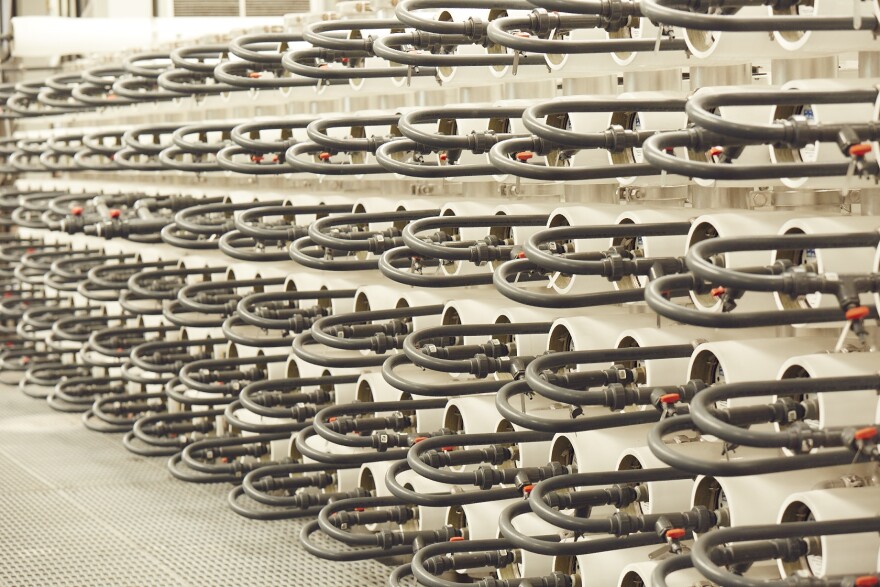Truth matters. Community matters. Your support makes both possible. LAist is one of the few places where news remains independent and free from political and corporate influence. Stand up for truth and for LAist. Make your year-end tax-deductible gift now.
The World's Largest Wastewater Recycling Plant Is In Orange County — And It Plans To Refresh Itself

We are facing a water crisis in California and experts say we need to invest more in recycling water.
Southern California cities are already recycling water more than any other area in the state. In fact, the world’s largest facility that recycles wastewater for drinking is right here in the Southland — in Fountain Valley to be exact. It’s called the Orange County Water District Groundwater Replenishment System (GWRS), and it’s where much of the OC’s water that goes down the drain or toilet, ends up.
GWRS generates 100 million gallons of drinkable water per day — and it’s being expanded so it can make 30 million more by next year. That’s enough water for more than a million people, according to GWRS. Many other southern California cities currently have or are working to build similar water recycling systems.
The wastewater goes through multiple steps to be treated for drinking— first, it’s treated at an Orange County Sanitation District plant. Then, instead of being discharged into the ocean like most treated wastewater, it’s sent to GWRS.
There, the water goes through several purification processes, including what’s called reverse osmosis.
“This will remove all the emerging contaminants, things that people worry about, the salts, the organics,” said Mehul Patel, a civil engineer and the facility’s operations director. “This gets the water to a level where it's almost distilled quality.”
Recycled water only provides about 3% of the state’s total water needs—and most of it goes to irrigating places such as parks and golf courses. Experts say in the face of a drier future, recycling water for drinking will need to play a bigger role.








